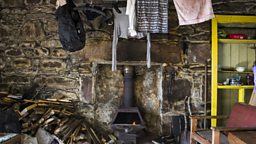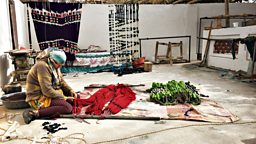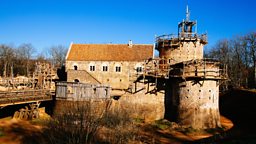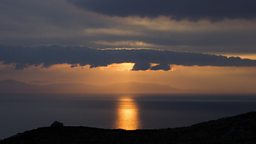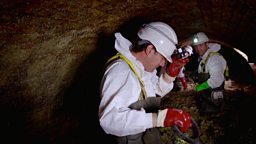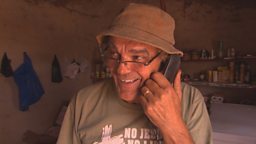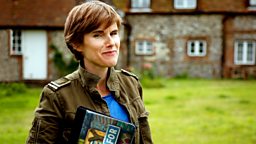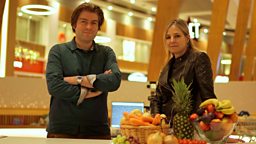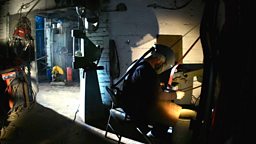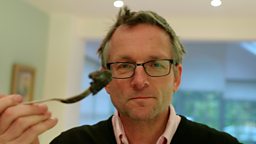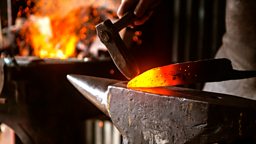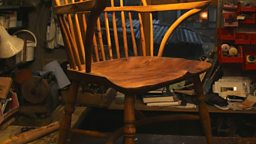How do you build a medieval castle from scratch?
By David Upshal, Executive Producer

Guédelon is the world’s biggest experimental archaeological site – and some would say the most ambitious too. Since first breaking the ground in 1997 the workforce have used the tools and techniques of the 13th century to unravel the mysteries of medieval construction.
And since they are resurrecting the crafts and methods of an age before mechanization, it’s all been done by hand. Which, in turn, means that everything is dependent on the skills of the workforce – a small army of stonemasons, blacksmiths, carpenters, wood-cutters, tilers, rope-makers and dyers who hand-craft every component on site.
- : “A novel means of creating long-term work opportunities for the long-term unemployed”
- Personal stories:
The workforce exhibits a close-knit camaraderie all too rare in a 21st century workplace
As they arrive and assemble in the morning they don’t just greet each other with a glib “hello”. Everyone seems to greet each other with a firm handshake or a peck on the cheek. And they depart in the same manner at the end of the day. And they routinely share beers or bottles of wine on site after changing out of their dusty work clothes before going home.
But then again, this project wouldn’t work unless the workforce had a close bond of mutual respect, because they are totally reliant upon each other to get anything done.

Cutting stone blunts the masonsâ tools so relentlessly that, unless they are sharpened by the blacksmiths every three days, all work at the castle will come to a standstill

Hardening metal the medieval way
Peter joinâs the castleâs resident blacksmith while Ruth gets on with the dishes..
From carpenters to blacksmiths to masons to stonemasons and back to carpenters
If a door needs making the carpenters prepare it, but they need the blacksmiths to forge nails, brackets and hinges. But all their work will be in vain if the masons have not measured out the hinge slots and the doorway itself accurately. If anything goes awry with the stonework, the door won’t fit.

The stonemasons depend on the carpenters to provide all their scaffolding, the treadmills that hoist stones to the tops of walls, even the buckets they need mix their mortar. And templates for the complex geometry involved in cutting stone accurately are all made of wood.
The carpenters, in turn, rely on the wood-cutters who go out into the abundant forests surrounding the castle to chop down trees when timber is required.
And everybody relies upon the unsung rope-makers who produce the many miles of rope needed weekly to bind and hoist loads – whether they be stone, wood or metal. Ropes were also twisted into thick braids and used to protect stones while they were being dressed.
The rope maker supplies the site with hemp and ïŹax ropes, of varying lengths and thicknesses. To make a rope, yarns are ïŹxed to the hooks on a jack, and, at the other end of the ropewalk, to a wooden traveller.
The rope maker then cranks the jack’s handle: he thus produces four strands, one per hook. As the yarns twist into strands, they pull the traveller towards the jack.
Finally, the rope maker splices the rope.

The workforce here also make their own paint, mortar, pots
Having recently built a water-mill they are now milling their own flour so that they have something to cook in the newly-completed kitchen of the castle’s Grand Hall. Talk about keeping it real…

The waterwheel that grinds grain into flour
Tom and Peter use a waterwheel to do the hard work for them.
At GuĂ©delon their motto is âwe learn by doingâ
They work with the ethos that the surest way of re-discovering lost techniques and methods to by discovering first hand what works and what does not. Archaeologists and academics flock to the castle to see their theories tried out and put into practice.
Above all, building a medieval castle requires the skill and co-operation of a workforce functioning together as a community.
The experience of making the programme
Secrets of the Castle proved very different from anything we have done before.

For a start it is our first venture overseas. It is also the furthest back in time that we have cast our net, being set in the 1300s – roughly the year 1246… around tea-time.
But the biggest difference has been that all the projects we have embarked on in the Castle series were already happening before we got there.
In our previous adventures we have been blessed with some magnificent locations – such as Manor Farm in Hampshire, Morwellham Quay in Devon and Acton Scott in Shropshire – but most of the projects we undertook to recreate the life of the era were devised and undertaken by the production team and presenters.
At Guédelon we scarcely had to devise any projects at all. Instead we joined in with the work constantly taking place around us. This is because Guédelon is a “work in progress”.
- : “A novel means of creating long-term work opportunities for the long-term unemployed”
- Personal stories:

